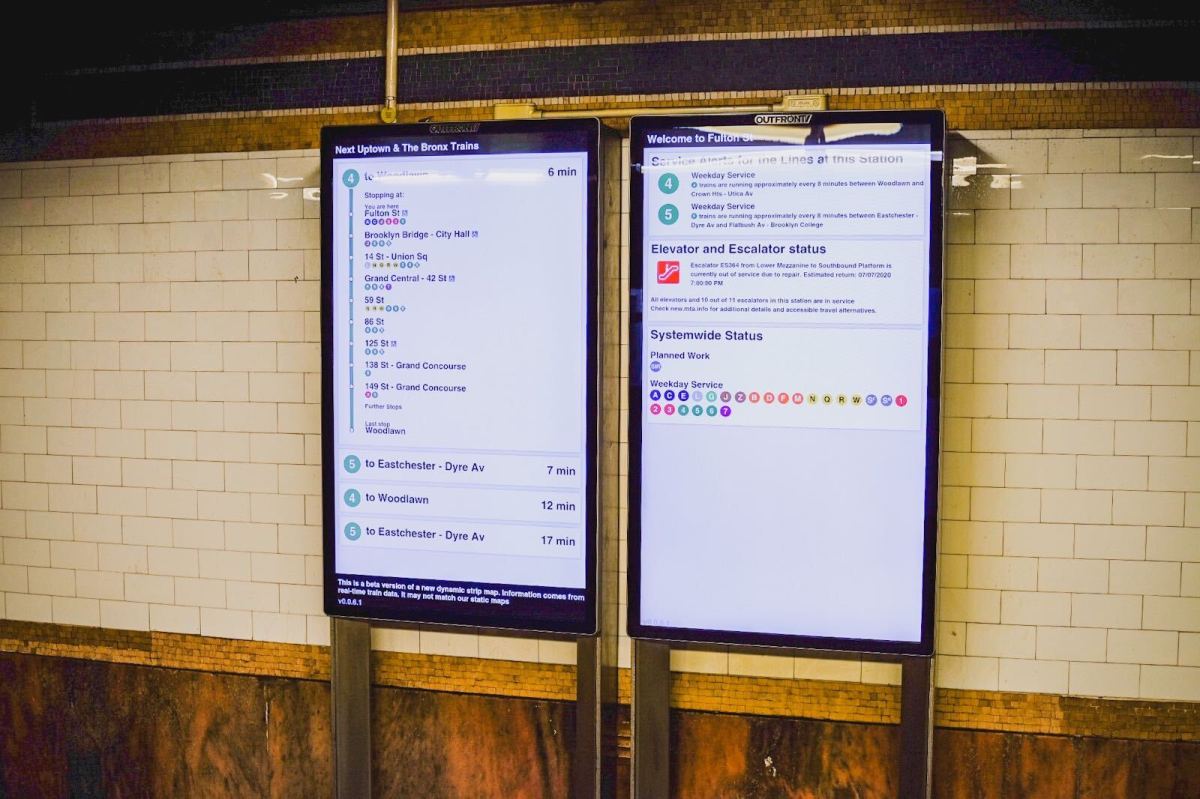As ridership picks up from the lowest of lows during the COVID-19 pandemic, the MTA plans to put more real-time information about trains at the disposal of customers.
About 9,000 new digital screens have been or will be installed in the weeks to come to provide insight to riders about service changes, delays, service alternatives, train arrivals and existing routes.
“We’re actually accelerating the installation of these screens to take advantage of the low ridership right now to get more work done toward the broader acceleration of program,” MTA Chief of Construction and Development Janno Lieber said. “We’re past the days when you would be looking at a wall of paper signs telling you about services changes. It’s all going to be on-time, clear and it’s going to be absolutely current on digital basis.”
For the software, the MTA enlisting the firm Postlight and hired consultants to launch a “custom-made solution” for the MTA’s effort to do away with Xerox paper notices on the platforms of stations.
The effort to increase digital notification of train statuses began in 2018 with Outfront Media providing the hardware. Existing digital signs are already used for not only service updates, but also to generate advertising revenue for the MTA, something needed dearly as it faces a $10 billion deficit.
The agency’s hemorrhaging funds stemmed from a 90% ridership plunge on subways, buses, Long Island Rail Road and Metro-North at the height of the pandemic. About $3.8 billion was provided by the federal government in the CARES Act, but the MTA is reaching the end of that line of aid.
“The MTA has been very upfront since the beginning of the crisis that the federal government has to step in. This is a national pandemic, the MTA has been losing roughly $800 million per month,” Lieber said. “So many people across the country are waiting for congress to take initial action, but New Yorkers especially deserve the federal government stepping in and making sure we don’t have impacts on the budget – catastrophic impacts – as a result of the national and global pandemic.”
The MTA is currently in the process of acquiring the last of what was provided in the CARES Act and has been pressuring the Senate Majority Leader Mitch McConnell to put the HEROES Act on the floor for a vote to provide an extra $3.9 billion for transit.
“If this is a 5 train via 4 track, it’ll show. If it’s a 5 running over the 2 [line], it’ll show and particularly the transfers as well up to date,” said Jay Sathe, a digital designer on the project. “This is as close as we’re going to get to guaranteeing what you’re going to be able to do.”
The 9,000 new screens will come online over the course of the 12 to 14 months, according to the MTA.


















